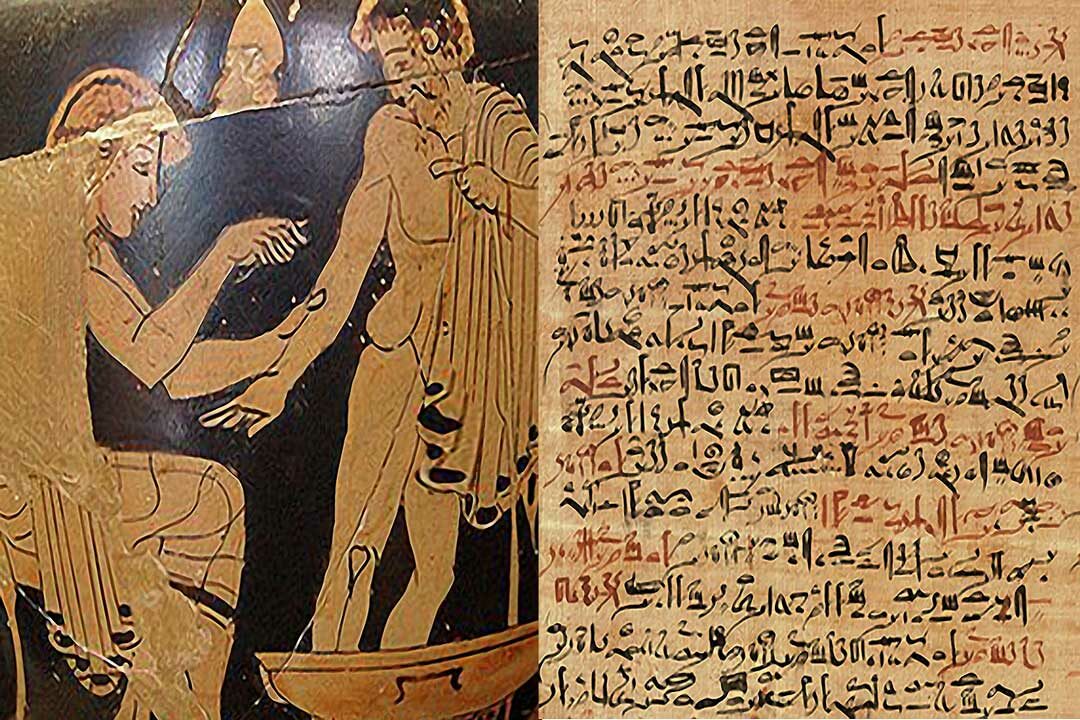Ever wondered how far back in time diabetes goes?
In fact, at least all the way back to 1550 BC.
With some interesting names used for this disease, like “honey-urine”. And some questionable treatment practices people have tried through the ages…
So let’s take a trip down memory lane, and explore the fascinating history of diabetes.
Ancient Egypt
Ancient Egyptians were possibly the first to ever mention diabetes in writing…
In a scroll called the Ebers papyrus, they mention a rare disease causing the patient to lose weight rapidly and urinate frequently.
Recommending diabetes should be treated with:
“A mixture including elderberry, plant fibres, milk, ‘beer-swill’, cucumber flowers, and green dates.”
They also suggest treating any urinary symptoms with “rectal injections of olive oil, honey, sweet beer, sea salt, and seeds of the wonderfruit.”
No matter how exciting ‘wonderfruit’ sounds, the rest doesn’t seem so appealing.
India
Around the 5th and 6th centuries, Ayurvedic doctors began to identify patients with diabetes.
Noticing not only their excess thirst and constant need to urinate, but also how diabetics’ urine was attracting flies and ants.
Soon they realised it tasted sweet and was sticky to the touch. This eventually prompted them to name diabetes madhumeha – or “honey urine”.
However, they still weren’t able to make the connection between these symptoms and blood sugar.
China
Chinese doctors noticed an epidemic of xiāo kě – “wasting thirst” spreading like wildfire through the population.
In fact, this is found in The Yellow Emperor’s Classic Of Internal Medicine.
And explained as the “three excesses and one loss”. Where the excesses are thirst, hunger, and urine. And the ‘loss’ refers to weight.
Even though these days, many diabetics gain weight – due to medication or a sedentary lifestyle.
Chinese doctors at the time would recommend abstinence from wine and salt as a diabetes remedy.
Ancient Greece
Many ancient Greek medical authors mentioned the symptoms of diabetes throughout the centuries.
But it wasn’t until Aretaeus of Cappadocia, in the 2nd century AD, that the term ‘diabetes’ was finally coined.
With the word coming from the Greek verb ‘διαβαίνω’ (diabaino), meaning ‘I pass through’. And diabetes meaning syphon.
Aretaeus was also able to provide the first accurate description of the disease:
“Thirst; excessive drinking, which, however, is disproportionate to the large quantity of urine, for more urine is passed; and one cannot stop them either from drinking or making water. Or if for a time they abstain from drinking, their mouth becomes parched and their body dry; they are affected with nausea, restlessness, and a burning thirst; […] Thirst, as if scorched up with fire.”
In fact, people at the time believed fluid flowed through the body unchanged.
And surprisingly, it wasn’t until British doctor Thomas Willis (b. 1621), when they realised diabetes was a “distemper of the blood.”
20th Century BC
Fast forward to the 20th century…
Science has come on leaps and bounds. If you ignore the fact diabetics were prescribed opium until as late as 1915!
Some people were even force-fed special low-carb, sugar free diets, if they “lacked self-discipline”.
However, experts finally managed to single out the pancreas as the root of the problem. Thanks to the development of physics, chemistry and pharmacology.
Researchers spotted clusters of insulin-producing cells called “islets”, and carefully extracted insulin from them.
Then in 1916, Romanian scientist Niculae Paulescu used this insulin to lower the blood sugar of a diabetic dog.
But he was suddenly called up to fight in World War I, with Canadian scientists beating him to the finish line.
Discovering and purifying insulin for clinical use in 1923.
In a breakthrough so important, four of them were jointly awarded the Nobel Prize for it. Yet this sparked a huge controversy.
With many arguing the real “discovery” of insulin was the product of hundreds – if not thousands – of people’s work. All throughout the centuries…
Extraordinary Breakthroughs
Of course, science didn’t stop there.
Diabetes treatments continue to evolve day by day. With the first insulin pump invented in the 1970s by Dean Kamen…
All the way to 2013 and the University of Cambridge trials for an artificial pancreas. Combining the technology of an insulin pump with a continuous glucose monitor.
A truly incredible history still unfolding. Who knows what the future still holds for diabetes…






